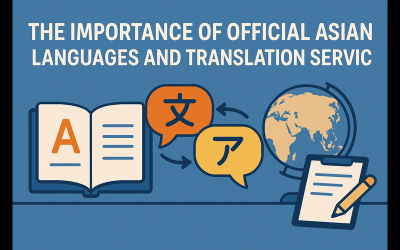In the field of translation and official documents, there are these two words: sworn translation and notarized translation. Although neither can be passed over in any legal or formal process, they both have different purposes and are called out differently in time. In general, it is especially important to know the differences between the two kinds of translations to anybody concerned with international documentation, legal proceedings, or formal work that is put down on paper in different languages.
What is Sworn Translation?
Sworn translation refers to the process of translating a document by a translator authorized or otherwise sanctioned by the authority to produce official translations; this may also be referred to as “sworn translators” or “certified translators,” depending on the country.
Sworn translations exerted the same legal validity and power as the source document in the target language. Affixing his signature and stamp/seal to the act of translation certifies the fact that the translated document is a faithful and true representation of the source document. Generally speaking, sworn translations are used for documents of the following nature, along with many others:
- Birth And Death Certificates
- Marriage Certs
- Divorce Court Rulings
- Academic Degree and Diploma Certificates
- Judicial Rulings
- Contracts
- Immigration Documents
Where a Sworn Translation Is Needed:
In cases where the end document of the translation needs to be recognized by public bodies, government institutions, or any other offices of the same type, sworn translations are necessary. For instance, the acquisition of citizenship in a foreign country, getting married outside country or presenting a document before a court of law in another country may demand a sworn translation.
Certified Translation ServicesGet your documents translated and certified by a professional translator in 120+ languages with 24 hour delivery. Get a Quote |
Who Can Do a Sworn Translation?
Sworn translations are performed by sworn translators, who thus have been certified as such in some legal body such as a court, ministry of justice or government agency. This is because most of such translators are immovable and before they could be in the position to act as a translator with authority, they have to undergo through rigorous testing accompanied by an oath.
What is a Notarized Translation?
Another type of certified translation is the notarized translation. Just to clarify what is notarized translation, a notary public has typically attested the translation (confirmed and signed it) who would have likely examined certain details of the translator’s identity and that the contents are true complete renderings.
The notary attests to the truth of the translation, not that he believes the translation is correct (a properly trained notary does NOT sign unless they are convinced beyond a reasonable doubt, click here for further explanation on why you should avoid untrained NSAs). So, in fact the job of the notary public is strictly speaking to measure whether anyone able did the translation and attested that it’s true and faithful.
Document Translation ServicesLooking for a Quick and Convenient Way to Get Professional Document Translation Service? Click the Button Below for Our Online Translation Service! Get a Quote |
Who Can Do a Notarized Translation?
Sworn translations must be made by a an officially-accredited translator, while notarized translations are from any professional translator. The translator translates and hands it over to a notary public who will apostille it. This is because the notary public is only there to witness the signature of the translator and to witness his or her identity and not the translation itself.
Key Differences Between Sworn and Notarized Translation
While both of these, the sworn and notarized translation, maintain the legalization of a translation for use (each in their own way) they differ greatly with regards to the process that makes them functional, the authority behind and when are they applicable. The key differences are as follows:
Legal Recognition:
Sworn Translation: Legal translations hold legal value and are recognized by courts, government institutions, and official bodies as equivalent to the original document.
A Notarized Translation — A document that has been translated is a notarized translation when it bears the formal certification of a notary public. This is a confirmation that the translator has been screened for identity and the translation reviewed for accuracy by an attorney or an entity authorized by the government.
When should you follow Sworn or Certified Translation?
A sworn translation is the best option if your document is legally used, for example, in court cases, before adjudicatory and government bodies, and in other situations that may require officially recognized proof. A sworn translator is allowed to keep the legality of a document so that the authorities will not question it.
If you have to send the translated document to any educational institution, a bank, or any other institution that has to verify the qualification of the translator, this would be certified translaiton.
Common Misconceptions
Another confusion is that notarization gives the same level of legal recognition to the document as a sworn translation. Notarization does not in any way identify the accuracy of the translation or equivalence to an original but merely identifies the fact that the translator is who he says he is, and it is his signature on the translation.
Another misconception is that any person who is a certified translator can do a sworn translation. That is erroneous. Sworn translations can only be done by those specifically granted the title of Sworn Translator before a legal authority.
Conclusion
It is especially important to understand the differences between sworn and notarized translations when addressing official documents needing translation for use abroad. Even though both are serious matters, they are not interchangeable, and the kind of translation chosen depends on the context and requirements of the situation.
When in doubt, what type of translation you should have in your particular case should always be consulted with the requesting authority or a translation office. This would help ensure that the documents will be accepted and recognized by the respective institutions, hence avoiding further delays or problems in your processes.
 Rana Maalouf
Rana Maalouf

